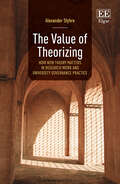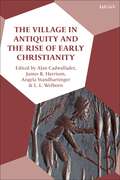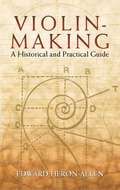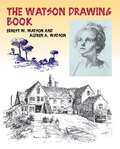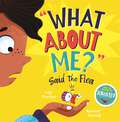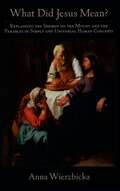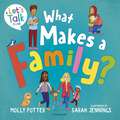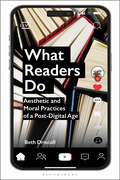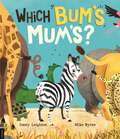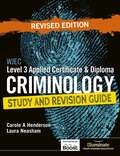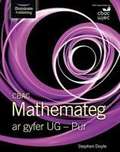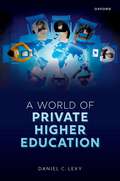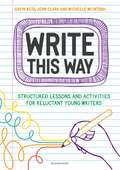- Table View
- List View
The Value of Theorizing: How New Theory Matters in Research Work and University Governance Practice
by Alexander StyhreIn this compelling book, Alexander Styhre presents a comprehensive analysis of the role and purpose of theory within the university setting. Critiquing current university governance practices which assess research quality based on citation frequency data, Styhre proposes an alternate measure of research quality based on contentful concepts in the space of reason.Focusing on the inner workings of scholarly communities, The Value of Theorizing evaluates the ‘quality as popularity’ fallacy and highlights the importance of alternative methods of thinking. Styhre draws on American pragmatism and analytical philosophy to construct his approach, bringing together theories of instrumental and methodological pragmatism. He goes on to dissect inferentialist theory, the semantics of language, and the political economy of new theory, amalgamating these to make an invaluable contribution to this ever-changing field.Highlighting the importance of reason in assessing the quality of theory in a university setting, this innovative book will prove an intriguing read for scholars of management and the social sciences with an interest in their research environment, as well as researchers of American pragmatism, analytical philosophy and the philosophy of language. It will also appeal to scholars, policy makers and university employees who are interested in refining university governance practices and the process of research.
The Village in Antiquity and the Rise of Early Christianity
by Alan Cadwallader James R. Harrison Angela Standhartinger L. L. WelbornA complete geographical and thematic overview of the village in an antiquity and its role in the rise of Christianity. The volume begins with a “state-of-question” introduction by Thomas Robinson, assessing the interrelation of the village and city with the rise of early Christianity. Alan Cadwallader and James R. Harrison then articulate a methodology for future New Testament studies on this topic, employing a series of case studies to illustrate the methodological issues raised.From there contributors explore three areas of village life in different geographical areas, by means of a series of studies, written by experts in each discipline. They discuss the ancient near east (Egypt and Israel), mainland and Isthmian Greece, Asia Minor, and the Italian Peninsula. This geographic focus sheds light upon the villages associated with the biblical cities (Israel; Corinth; Galatia; Ephesus; Philippi; Thessalonica; Rome), including potential insights into the rural nature of the churches located there.A final section of thematic studies explores central issues of local village life (indigenous and imperial cults, funerary culture, and agricultural and economic life).
Violin-Making: A Historical and Practical Guide
by Edward Heron-AllenThis classic guide offers an accessible initiation into the mysteries of violin-making. Charming in its style and cultivated in its research, it covers every detail of the process, from wood selection to varnish. A fascinating history of the instrument precedes discussions of materials and construction techniques. More than 200 diagrams, engravings, and photographs complement the text.Author Edward Heron-Allen served an apprenticeship with Georges Chanot, a preeminent nineteenth-century violin maker. The knowledge, skill, and experience Heron-Allen acquired in the master's shop are reflected in this book, which was the first to combine the history, theory, and practice of violin-making. Originally published in 1884 as Violin-Making, As It Was and Is: Being a Historical, Theoretical and Practical Treatise on the Science and Art of Violin-Making for the Use of Violin Makers and Players, Amateur and Professional, this volume has enlightened and informed generations of performers and players alike.
The Virginia Tech Massacre: Strategies And Challenges For Improving Mental Health Policy On Campus And Beyond
by Aradhana Bela Sood Robert CohenWalkThru 5-step guides to build great teaching (USA Edition)
by Tom SherringtonThe Teaching WalkThrus series of books have sold more than 250,000 copies worldwide. Now, WalkThru creators Tom Sherrington and Oliver Caviglioli have curated a selection of essential five-step teaching techniques aimed at US schools and educators.The five-step instructional coaching guides are explained by Sherrington's concise direction and Caviglioli's signature iconography and cover all the key areas of teaching: behaviour and relationships; curriculum planning; explaining and modelling; questioning and feedback; practice and retrieval; and Mode B teaching.The featured WalkThrus have been selected from the original trilogy of books and adapted especially for the US.The WalkThrus books are supported by an online PD toolkit, which is now used by 3,000 organisations in 40 countries.
The Watson Drawing Book (Dover Art Instruction)
by Aldren A. Watson Ernest W. WatsonBoth serious students and amateurs will appreciate this guide to drawing, an ideal resource for those who want to develop their skills whether for professional reasons or simply for pleasure. Its comprehensive chapters cover all of the basic black-and-white drawing media: pencil, charcoal, pen and ink, brush and ink, quill and rush pens, felt-tip, wash, and mixed media. A showcase of technical methods allows students ample opportunity to experiment with finding their preferred approaches. Technical information includes instruction in such important basics as perspective, proportion, form analysis, light, and shade. Portrait drawing, figure sketching and outdoor sketching are also covered. In addition to the authors' sketches and studies, the text features numerous drawings in a variety of techniques by old masters as well as contemporary artists.
What About Me? Said the Flea
by Lily MurrayWhen a little girl sits down at her desk one day to write a story, she struggles to find her inspiration ... Luckily for her there’s a whole host of potential picture-book characters who want to be the star of her story and make their cases convincingly. There’s the magical, proud unicorn with sparkly hooves and a glittery horn. There are the big, burly bears hosting a picnic, the loveable llamas in pyjamas, the stylish sloth, the lion, the penguins, and even a roar-some, claw-some dinosaur …But, unnoticed by the little girl, an even littler flea is hopping and jumping around, hoping to be the one she chooses to write a story about. "What about me?" it cries.With all the big characters and commotion, will the flea ever be noticed?Set in fun, rhyming couplets, What About Me? Said the Flea celebrates the power of imagination, determination, and the good things that come in teeny tiny packages.
What Did Jesus Mean?: Explaining The Sermon On The Mount And The Parables In Simple And Universal Human Concepts
by Anna WierzbickaWhat Makes a Family?: A Let’s Talk picture book to help young children understand different types of families (Let's Talk)
by Molly PotterFrom the bestselling author of How Are You Feeling Today?, this picture book helps children understand and celebrate different types of families.What Makes a Family? explores different types of families, from what makes them unique to what they all have in common. Using everyday examples, clear explanations and colourful illustrations by Sarah Jennings, this book encourages children to celebrate families of all shapes and sizes. This diverse picture book covers lots of different family structures, including nuclear families, blended families, LGBTQ+ families, single-parent families, fostering and adoption. It's the perfect resource for starting important conversations with children about what different families can look like, and the love that holds them all together.Let's Talk books help you start meaningful conversations with your child. Written by an expert and covering topics like feelings, relationships, diversity and mental health, these comforting picture books support healthy discussion right from the start.
What Readers Do: Aesthetic and Moral Practices of a Post-Digital Age
by Dr Beth DriscollShining a spotlight on everyday readers of the 21st century, Beth Driscoll explores how contemporary readers of Anglophone fiction interact with the book industry, digital environments, and each other.We live in an era when book clubs, bibliomemoirs, Bookstagram and BookTok are as valuable to some readers as solitary reading moments. The product of nearly two decades of qualitative research into readers and reading culture, What Readers Do examines reading through three dimensions - aesthetic conduct, moral conduct, and self-care – to show how readers intertwine private and social behaviors, and both reinforce and oppose the structures of capitalism. Analyzing reading as a post-digital practice that is a synthesis of both print and digital modes and on- and offline behaviors, Driscoll presents a methodology for studying readers that connects book history, literary studies, sociology, and actor-network theory. Arguing for the vitality, agency, and creativity of readers, this book sheds light on how we read now - and on how much more readers do than just read.
What to Draw and How to Draw It
by E G LutzLearn how to draw, with a masterclass from the man who inspired Walt Disney.Credited with being the inspiration for Walt Disney to pick up a pencil and pursue a career in animation, E G Lutz's method of drawing complex illustrations in gradual, simplified stages paved the way for many of the artists and illustrators who followed him.* Learn how to draw a delightful range of subjects, from animals and people to toys, buildings and landscapes.* Pictures are broken down into simple shapes and lines, which are then built up, with the aid of clear step-by-step instructions, into beautiful drawings.* Simple to follow, yet using principles seen in sophisticated artworks and animations today, this guide can help budding artists of all ages to develop their skills.Nostalgic yet timeless, this historically and culturally important book has inspired so many adults and children to draw and can help you too to discover the delights of creating your own artwork.
Which Bum's Mum's?
by Jonny LeightonA hilarious tale of Ziggy the zebra’s journey through the savannah, and the different animal bums he encounters on his quest.When a young zebra accidentally causes a huge stampede, he finds himself lost and alone. But he knows he’ll find home again if he just looks out for his mum’s distinctive, zig-zag striped bum. Along the way, he’ll encounter big ones, small ones, spotty ones, tall ones, hairy bums, smelly bums, scaly ones and old ones, belonging to huge hippos, very tall giraffes, lazy lions and many more animals besides.Written by Jonny Leighton and illustrated by Mike Byrne, the dynamic duo behind Does a Bear Poo in the Woods?, this laugh-out-loud story book will be accompanied by very cheeky illustrations to complete the bum-tastic odyssey.
Wilderness as Metaphor for God in the Hebrew Bible
by Robert MillerThe ancient Israelite authors of the Hebrew Bible were not philosophers, so what they could not say about God in logical terms, they expressed through metaphor and imagery. To present God in His most impenetrable otherness, the image they chose was the desert. The desert was Ancient Israels southern frontier, an unknown region that was always elsewhere: from that elsewhere, God has come -- God came from the South (Hab 3:3); God, when you marched from the desert (Ps 68:8); from his southland mountain slopes (Deut 33:2). Robert Miller explores this imagery, shedding light on what the biblical authors meant by associating God with deserts to the south of Israel and Judah. Biblical authors knew of its climate, flora, and fauna, and understood this magnificent desert landscape as a fascinating place of literary paradox. This divine desert was far from lifeless, its plants and animals were tenacious, bizarre, fierce, even supernatural. The spiritual importance of the desert in a biblical context begins with the physical elements whose impact cognitive science can elucidate. Travellers and naturalists of the past two millennia have experienced this and other wildernesses, and their testimonies provide a window into Israel's experience of the desert. A prime focus is the existential experience encountered. Confronting the desert's enigmatic wildness, its melding of the known and unknown, leads naturally to spiritual experience. The books panoramic view of biblical spirituality of the desert is illustrated by the ways spiritual writers -- from Biblical Times to the Desert Fathers to German Mysticism -- have employed the images therefrom. Revelation and renewal are just two of many themes. Folklore of the Ancient Near East, and indeed elsewhere, that deals with the desert / wilderness archetype has been explored via Jungian psychology, Goethean Science, enunciative linguistics, and Hebrew philology. These philosophies contribute to this exploration of the Hebrew Bible's desert metaphor for God.
The Wind in the Willows
by Kenneth GrahameThe escapades of four animal friends who live along a river in the English countryside--Toad, Mole, Rat, and Badger.
WJEC Level 3 Applied Certificate & Diploma Criminology: Study and Revision Guide - Revised Edition
by Laura Neasham Carole A HendersonRevised and updated in line with the latest specification and matched to the best-selling revised edition Student Book, this engaging Study and Revision Revision Guide summarises key information in a manageable and highly-visual way.- Written by an experienced Criminology teacher and senior examiner- Includes updated case studies and data along with a new practice exam questions and model answers to help students refine their exam technique- New and improved features to help students consolidate learning and put their knowledge into action- Highly visual and student-friendly text design to inspire and motivate- Units are structured to mirror the specification and encourage easy navigation
WJEC Mathematics for AS Level: Pure
by Stephen DoyleWritten by bestselling author Stephen Doyle, this student book will engage and motivate you throughout the course. // Endorsed by WJEC offering high quality support you can trust. // Thorough coverage of all the topics in the AS Level Pure specification. // Extra support for the problem solving and unstructured questions in the specification. // Plenty of examples with worked answers throughout to enable you to check your understanding as you progress through the course. // Answers to questions are provided in order to check your work.
Women Navigating Educational Leadership (Educational Leadership: Innovative, Critical and Interdisciplinary Perspectives)
by Jana L. CarlisleThis book draws on insights from 37 women leaders, collected from 2020 to 2022, around women's experiences with gender and racial bias, resilience, social justice, and leadership strategies and challenges. The respondents possess different educational backgrounds, reflect different ethnic, racial and age groups, and inhabit varied roles and organizations, from public school districts, charter school networks, graduate schools of education, and partner/support organizations. Jana L. Carlisle responds to the underrepresentation of women in education leadership positions and the complicated and veiled routes women must take to ascend to leadership, and proposes the most applicable models, standards, strategies, and supports vital to women educational leaders.
A World of Private Higher Education
by Daniel C. LevyA World of Private Higher Education is the definitive treatment of a sector accounting for a third of the world's 200 million higher education enrolment--yet remaining largely unknown even to scholars of higher education and widely mis-characterized when it is considered by stakeholders or the general public. Beyond the eye-popping numbers, several inter-related thematic findings regarding the Private and the Public underscore the subject matter's importance. First, private-public differences are significant-it matters that so many students are in a sector that not long ago was only marginal in much of the world. Second, private higher education (PHE) itself is increasingly diverse, with significant and private-private differences. Third, the overlaying of the first two realities yields increasing diversity in private-public higher education distinctions. Especially for its pioneering mapping of PHE globally, regionally, and nationally, the book draws on the pioneering dataset of the pioneering scholarly program for research on PHE (Program for Research on Private Higher Education). Unprecedented in geographical scope, the dataset is unprecedented in longitudinal coverage too, dating back to 2000. Empirical methods allow for extensive analysis, and theoretical analysis draws on key private-public concepts embedded in literatures on privatization, nonprofit studies, and policy models. For the major challenge of penetrating inside the increasingly diverse private sector of higher education, Levy revises his heralded and widely employed PHE typology.
Write This Way: Structured lessons and activities for reluctant young writers
by Dr. Gavin Reid Jenn Clark Michelle McIntoshMany children avoid writing for a number of reasons – perhaps they find it tedious or frustrating, or perhaps they have dyslexia or dysgraphia. This structured programme of writing activities and lessons makes writing engaging and accessible for reluctant writers, by encouraging primary teachers and learners to work together to develop children's writing skills.The book covers all aspects of primary school writing, including grammar, sentence development, punctuation, paragraph writing and planning. It also shows teachers how to develop self-sufficiency skills in writing and encourage learner independence. Each section in the book builds on previous skills learned, from word level up to creative writing skills, providing pupils with a complete range of writing tools. The ready-to-use resources for each topic - including mini lessons, discovery tools and activities - offer extensions and adaptations to suit all pupil needs, including fun ideas for multisensory learning, group interventions or to keep pupils learning outside of the classroom.For school staff working with children who find writing challenging, this practical toolkit provides a range of activities based on solid research and hands-on experience that can be incorporated straight into lessons and teaching practices.
Yachtmaster for Sail and Power 6th edition: The Essential Manual for RYA Yachtmaster® Certificates of Competence
by Alison Noice Roger SeymourNow in its sixth edition, Yachtmaster for Sail and Power is an essential companion for anyone enrolling on the RYA Coastal Skipper/Yachtmaster Offshore course.This highly respected and refreshingly practical study guide covers the whole syllabus in detail, illustrated with colour photographs, charts and worked examples throughout.Contents includes:· Chartwork – with useful worked examples · Electronic navigation – how to use the latest technology for safe navigation: radar, electronic chart plotting and GPS· Pilotage – buoyage fully explained and illustrated · Communications – the latest information on maritime communications including GMDSS · Weather – the elements of meteorology, weather sources and forecasts · Safety and survival – new SOLAS regulations· Stability and buoyancy – principles simply explainedIncluding the latest updates, new artwork and a modern, user-friendly design, this 6th edition complements the syllabus and assists with exam preparation.
You Can Draw Cats (Dover Art Instruction)
by Gladys Emerson CookOne of America's most beloved animal illustrators provides 194 gracefully regal drawings — plus expert tips — that will have any feline-loving artist purring with delight. From Angoras to Persians, Cook clearly demonstrates the differences in breeds, and takes a walk on the wild side with big cats like pumas and lions. Additional topics include anatomy, movement, sketching, and materials. Artists at every level, from absolute beginners to the highly experienced, will appreciate this concise guide's many insights.
Aktuelle wissenschaftstheoretische Aspekte der Hochschuldidaktik (Hochschuldidaktik)
by Helmut SeiffertArchaeology and the Old Testament (PDF)
by James B. PritchardArchaeology is a science in which progress can be measured by the advances made backward into the past. The last one hundred years of archaeology have added a score of centuries to the story of the growth of our cultural and religious heritage, as the ancient world has been recovered from the sands and caves of the modern Near East-Egypt, Jordan, Israel, Syria, Lebanon, Turkey, and Iraq. Measured by the number of centuries which have been annexed to man's history in a relatively few years, progress has been truly phenomenal. This book deals with the recent advance and with those pioneers to the past who made it possible. Interest in biblical history has played an important part in this recovery. Names such as Babylon, Nineveh, Jericho, Jerusalem, and others prominent on the pages of the Bible, have gripped the popular imagination and worked like magic to gain support for excavations.This book is written from the widely shared conviction that the discovery of the ancient Near East has shed significant light on the Bible. Indeed, the newly-discovered ancient world has effected a revolution in the understanding of the Bible, its people, and their history. My purpose is to assess, in non-technical language which the layman can understand, the kind of change in viewing the biblical past which archaeology has brought about in the last century. Since the text of the Bible has remained constant over this period, it is obvious that any new light on its meaning must provide a better perspective for seeing the events which it describes. In short, I am concerned with the question, How has history as written in the Bible been changed, enlarged, or substantiated by the past century of the archaeological work?--from the Preface
The Art of Learning
by Zbigniew PietrasinskiThe Art of Learning deals with psychological knowledge of effective methods of learning for the student to develop good and effective study habits. This book regards study habits as good training for efficient performance later in the student's actual work career. This text examines the rational methods of study and the habits of efficient studying, and even presents a questionnaire for the student to determine his own study habits. The author also emphasizes the equipment and place of study. Then the author evaluates the methods of book learning, such as preparation, intellectual activity during learning, concentration, and memorizing. He also gives tips when the student is learning large amounts of material, reading techniques, group studies, and taking notes. This book presents as well ways how the student can plan his studies, the principles of habit formation, and an example of the modern method of forming occupation habits. This text also tackles the acquisition and development of qualities such as the psychological bases of the creative attitude and the principles of rationalization, effort, and better utilization. This book then discusses the acquisition of wisdom and the commons ways to finding it. This text is suitable for students in technical schools, universities, and colleges; part-time students; students who are self-learners; and those in adult-education schools.
Awakening the Slower Mind: The Commonwealth and International Library: Pergamon Educational Guides
by Violet R. BruceAwakening the Slower Mind deals with the education of and teaching special-needs children. More particularly, this book concerns children in special schools for the ""educationally subnormal,"" whom the author differentiates from the ""ineducable"" child. The first part of this book discusses these children by noting conditions before and during their birth and the background environment of immigrant children and school transferees. The second part of this text is a discussion on the educational system as to how it affects these children, and discusses when the child with difficulties cannot keep up with his teachers, with the other students, and with the system. In a highly industrialized country, literacy becomes an important tool for communication. By making these special students appreciate the value of using language properly through the teacher's efficient use of expressive arts and similar activities, their personality can develop and grow, to the point that they will learn to appreciate the value of learning appropriate and correct language skills. The author points out that in this way, these children will become functionally literate. This book is recommended for school administrators for special learning institutions, school counselors, education majors, pediatricians, and parents of special-needs children.
